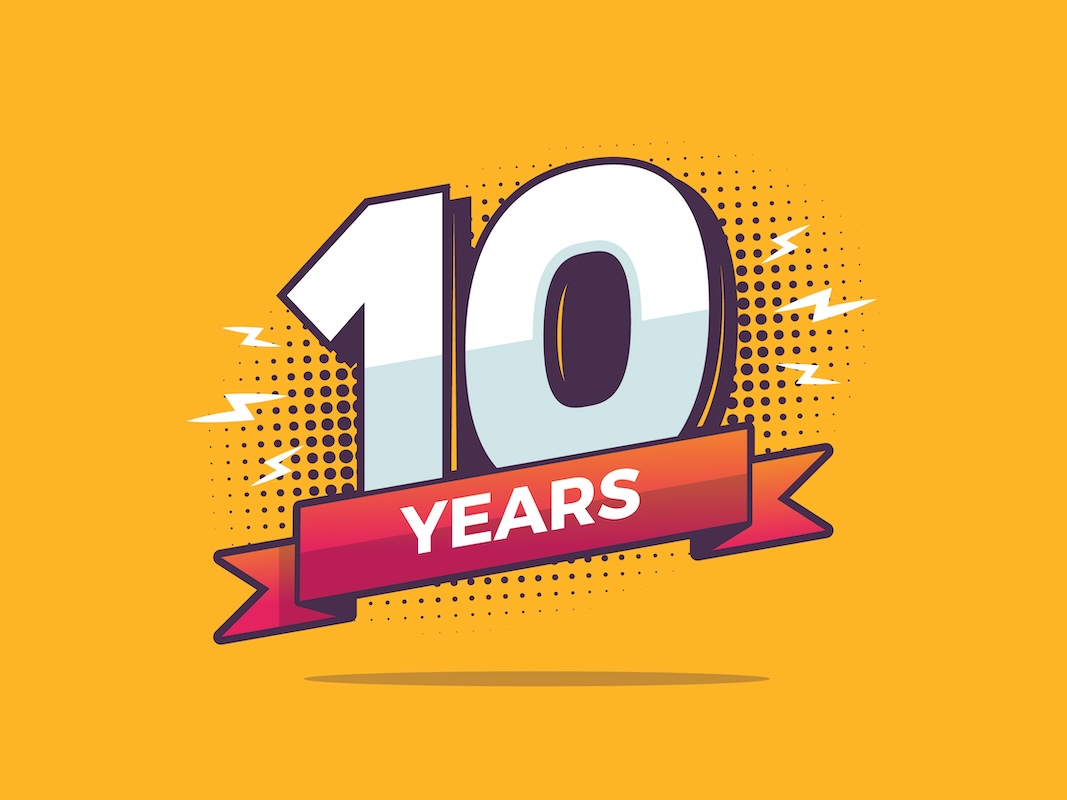Setting 10-Year Goals: How to Future-Proof Your Investment Portfolio
by Gabriel Lewit

Depending upon your age, ten years may seem like a long time from now or like the blink of an eye. When you think about your finances and life stages, ten years could mean the difference between getting close to retirement or being in the early, mid, or late stages. Regardless of your current stage in life, having a well-thought-out set of 10-year financial goals could impact when and how you live during retirement.
Having long-term financial goals based on a comprehensive plan can assist in your efforts to pursue financial independence. As Benjamin Franklin once quipped, “If you fail to plan, you are planning to fail.“ Nothing could be truer when your long-term financial well-being is at stake.
This blog post explores the importance of setting realistic goals that impact your financial health. We’ll also look at differentiating between short-term and long-term planning strategies and what that means for your financial planning process: Current situation, time horizon, goals, and risk tolerance.
Read More in our Guide: Navigating the Volatility: The Power of Long Term Investing
Short vs. Long-Term Goals
Short-term goals typically span up to three years, focusing on your immediate needs and wants. In contrast, long-term goals, including 10-year financial targets, require a more strategic approach. They often involve achieving significant milestones, like paying off a mortgage, purchasing a second home, funding a child’s education, or planning for that worldwide trip.
As retirement planners in Buffalo Grove, we specialize in helping successful individuals and families craft wealth management strategies that are both realistic and adaptive to various market conditions.
We understand that people in Illinois can retire at 65 and live to be 100. Based on medical science and healthier lifestyles, this is a real probability for one or both spouses.
Assessing your Tolerance to Risk
Understanding your risk tolerance is key to long-term financial planning. It influences your choice of asset classes and investment accounts, impacting how you allocate resources in your 401(k) plan, traditional IRA, Roth IRA, and personal savings accounts.
Another major consideration is the impact of inflation on the purchasing power of the assets you accumulate to fund your lifestyle during retirement. Very few couples know the true cost of inflation and its impact on their financial independence during decades of retirement. How about you? Inflation and taxes are two forms of erosion that will impact you.
As an example, imagine you’re planning to retire in 10 years. If you’re overly cautious and invest too conservatively, your savings might not grow enough to keep up with rising costs. For example, your investments earn a 6% rate of return, inflation averages 3%, and your withdrawal rate is 4%. You need to catch up every year that these numbers are applicable. Imagine the impact over decades of retirement.
For instance, assisted living that costs $5,000 per month may cost $10,000 in the future due to the rising cost of healthcare. Ideally, your investments produce returns that offset your distributions, inflation, and other expenses. This is a process that has to last for decades.
On the other hand, if you’re comfortable with some level of risk and invest in a diversified portfolio of assets that produce appreciation and income, you can offset all of the erosive forces that reduce the value of your assets.
This balance is intensely personal. It depends on your age, expected retirement date, lifestyle aspirations, legacy planning, and other financial considerations. It’s about finding that sweet spot where your investments work hard enough to meet your future needs without exposing you to higher levels of risk.
Remember, the right approach today can be the difference between a financially comfortable retirement and one where you must make some compromises you would rather avoid.
Time Horizon
Another factor in developing your ten-year financial goals is defining your time horizon. Simply put, your horizon is the time between your current age and when you plan to retire. Or, your horizon impacts when you need the assets or income produced by the assets. This period is crucial because it influences how much risk you can afford to take with your investments.
For example, if you’re in your mid-30s and plan to retire at age 65, you have a 30-year investment horizon before you need the assets to produce retirement income. This allows you to take on more risk in your investment portfolio because you have plenty of time to recover from serious market fluctuations. Your focus might be on growth-oriented investments like stocks and real estate, which historically have produced higher returns than bonds or cash equivalents over longer periods, albeit with the potential for higher short-term volatility.
On the other hand, if you are 60 and plan to retire in 5 years, you have less time to recover from market fluctuations. If you depend on the assets as a source of retirement income, you may want to take less risk to preserve asset amounts. Here, the strategy often shifts towards preserving the wealth you’ve accumulated. For example, invest in short and intermediate bonds or look at annuity products that can help protect your assets while still providing growth opportunities. This helps protect your savings from significant market downturns that could occur in the short term, ensuring you have the funds you need to create income when you retire.
Regular Portfolio Reviews
Creating ten-year financial goals is one thing. Following up and reviewing your results and strategy regularly is another. You should plan on regular reviews and adjustments that keep pace with market conditions and your needs.
- Reviews help keep your investments aligned with your long-term goals. All of your assumptions are subject to change. The same philosophy applies to your plan for accumulating and preserving retirement assets.
- What seemed like a good plan last year may not be good this year or in future years. You aren’t trying to predict market events, but you do track and respond to the events promptly.
- You already know the stock market is subject to significant fluctuations that can last a month or several years. Regularly reviewing your portfolio’s investments and results helps you stay abreast of what is and is not. Then, you can make informed decisions, for example, rebalancing your portfolio to maintain a desired risk-reward ratio. This can also impact the future performance of your portfolio.
- A key takeaway: regular assessments allow for spotting and correcting discrepancies as they occur. This might include addressing underperforming assets, excessive fees, unacceptable risks, or a change in tax code that could affect your retirement strategy. Staying informed and proactive with your retirement savings means you can make timely decisions, helping to ensure that when retirement comes, your financial situation will fund the life you want when your working years are complete.
About SGL Financial
Our Buffalo Grove retirement planning specialists team has created a “four-pillar retirement plan” focusing on retirement income, investments, tax planning, and legacy/estate planning.
As fiduciary financial advisors in Buffalo Grove, we commit the time to develop prudent investment strategies based on various time periods and events – for example, your retirement date.
Contact us to learn more about our four-pillar retirement planning process.

